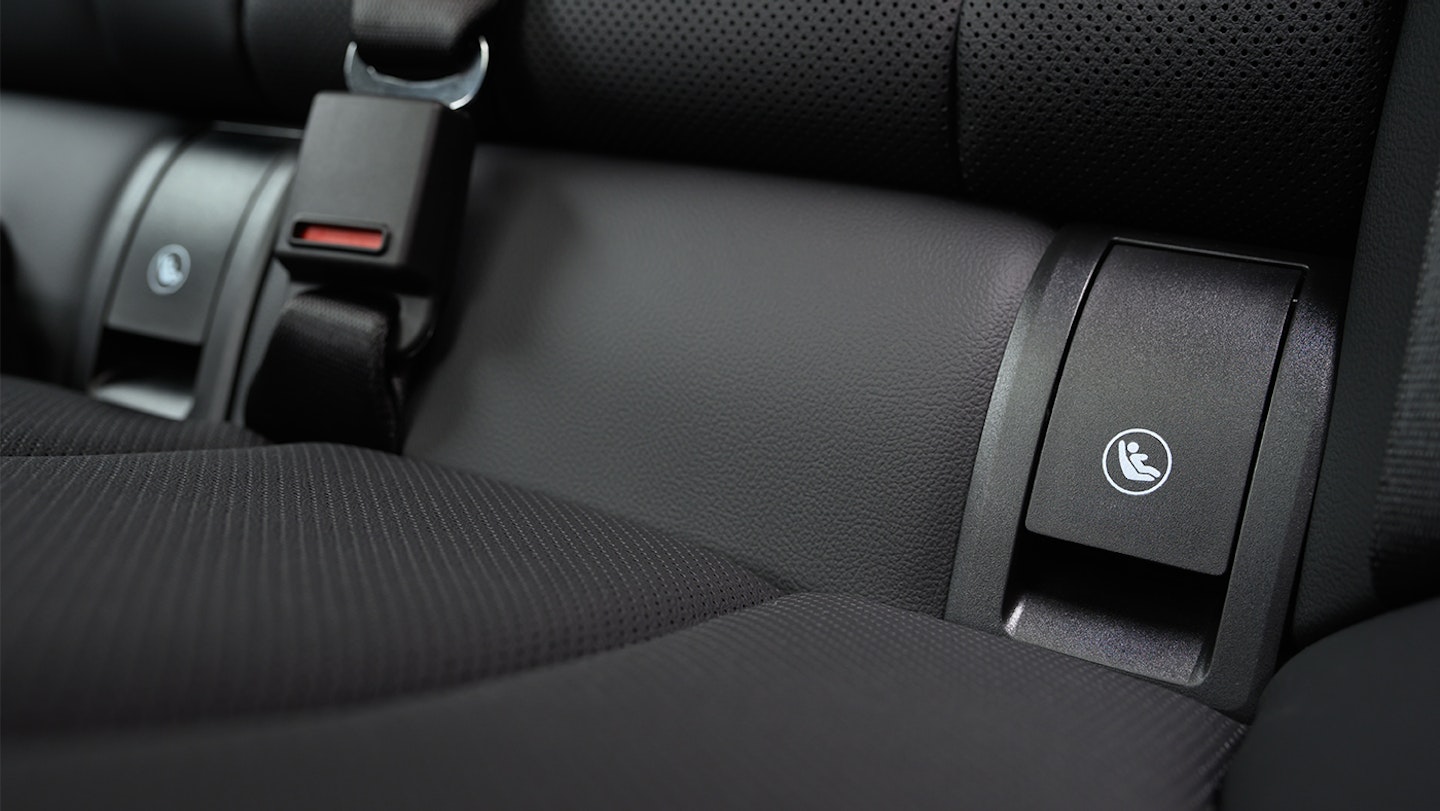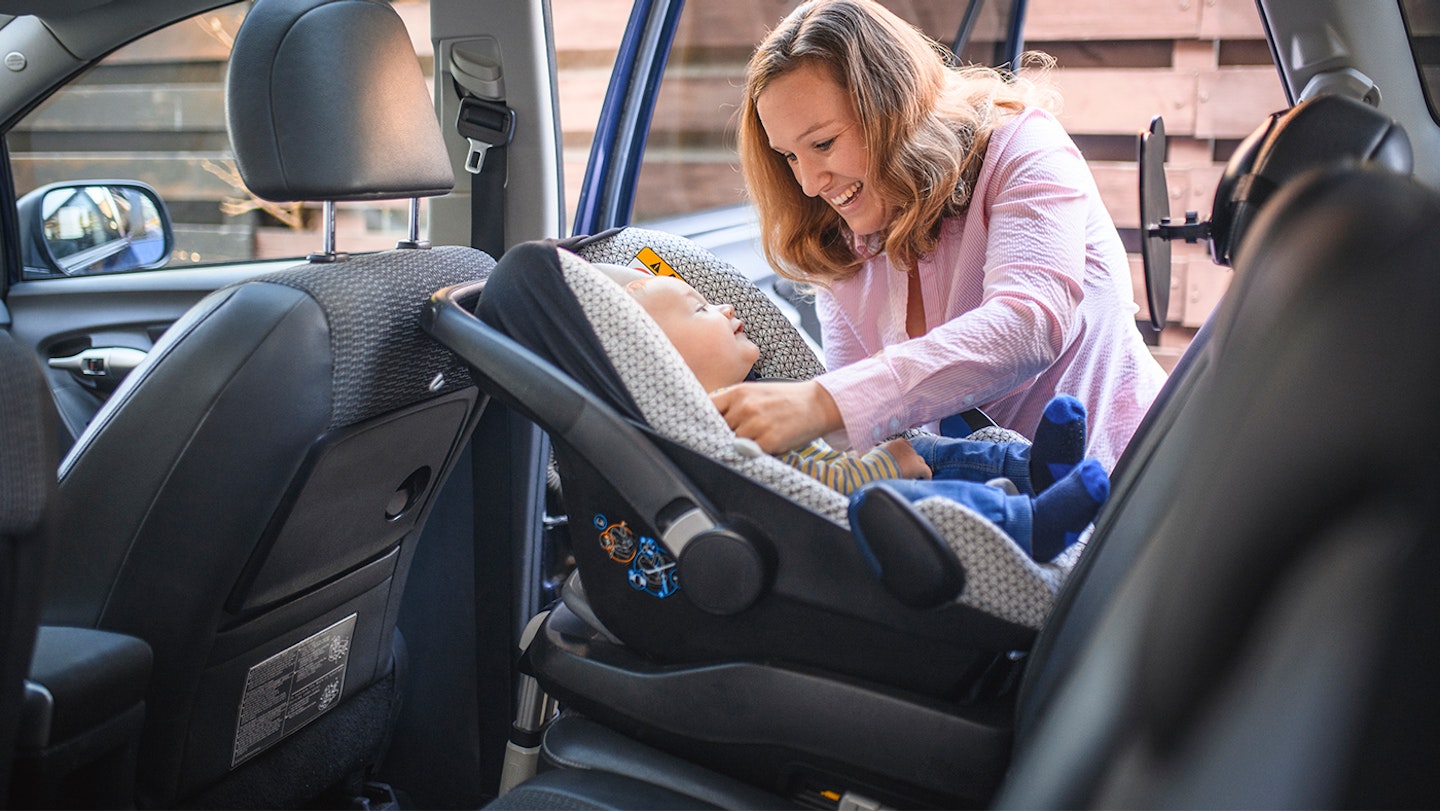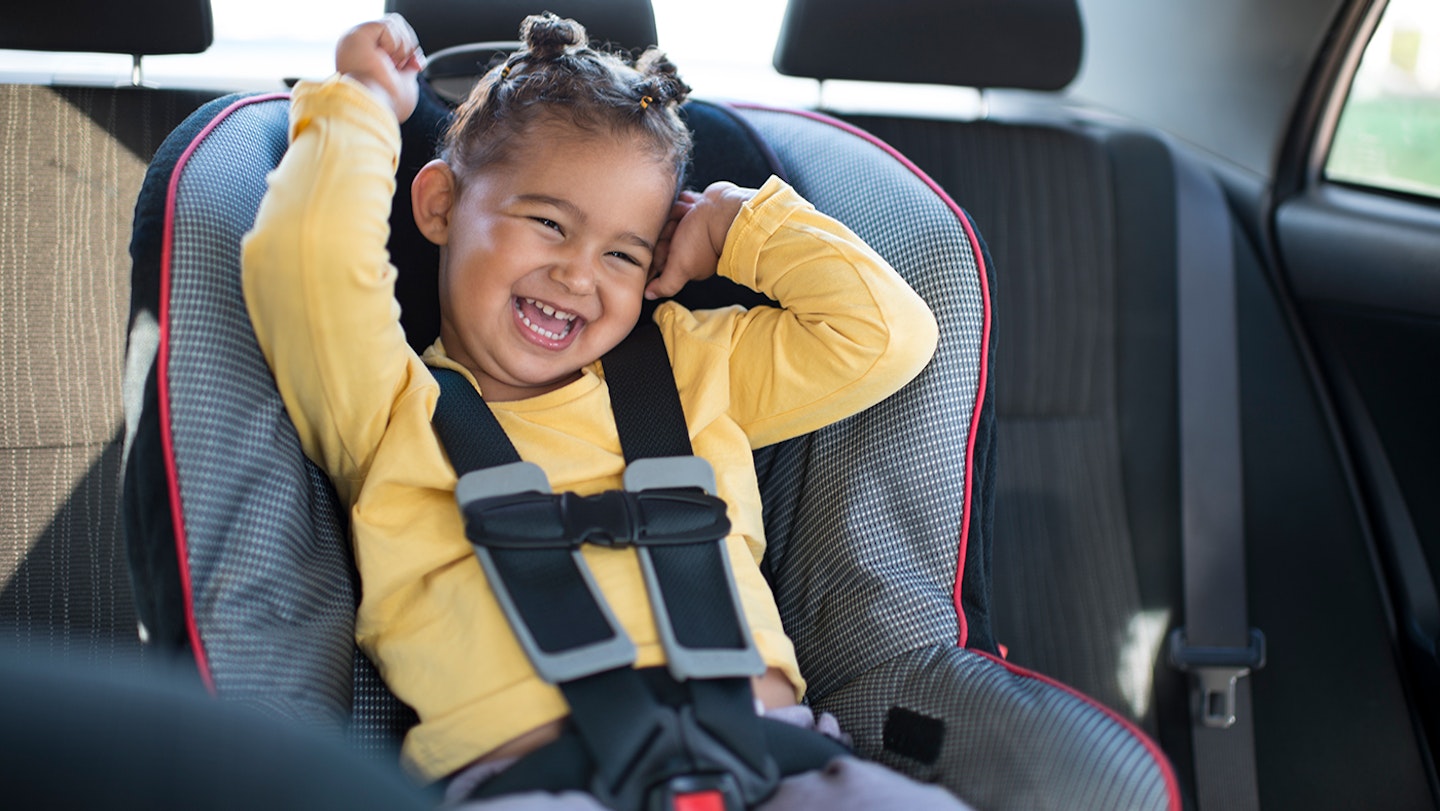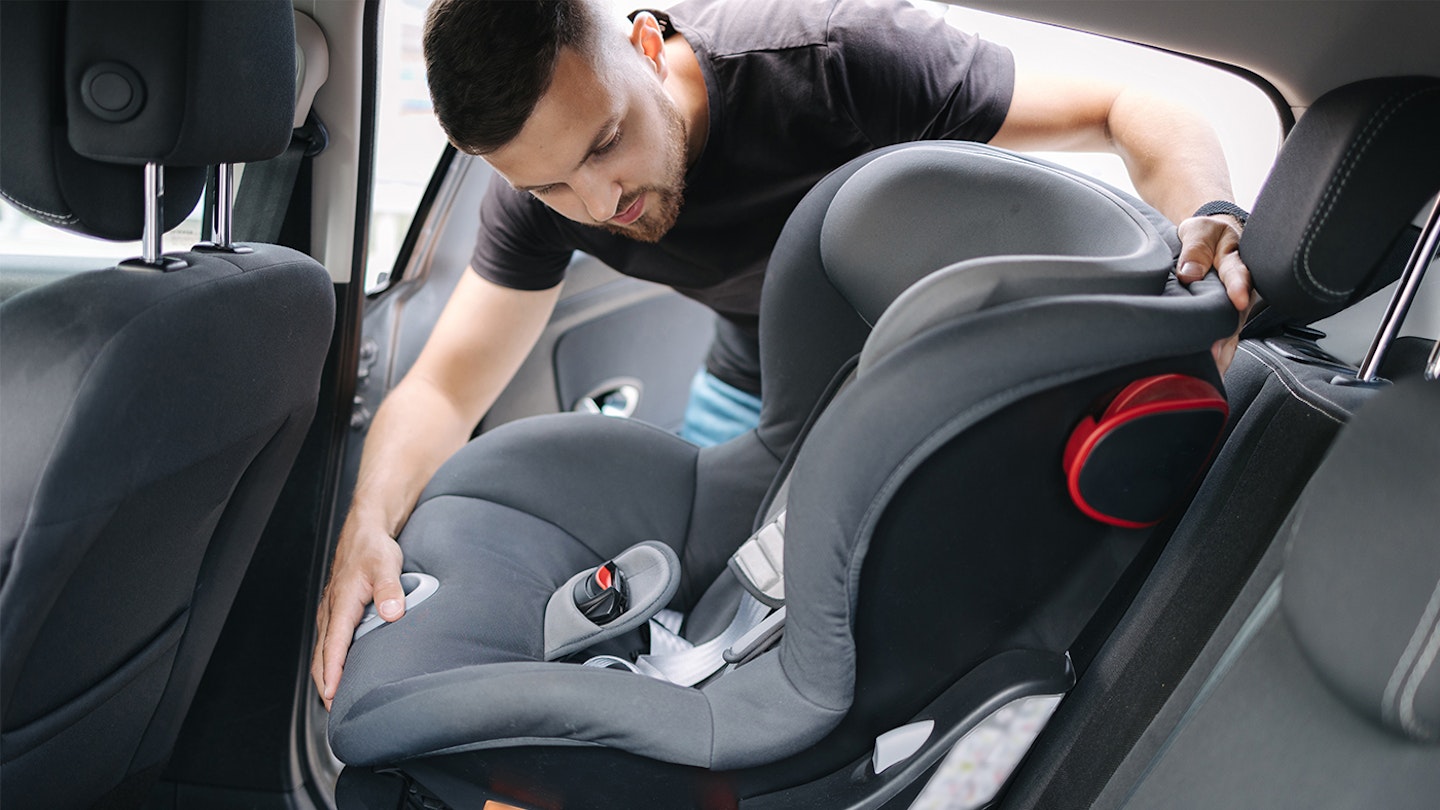Buying a car seat for your little one can be a baffling experience – and then when you have finally made your decision, made your purchase, and got your new seat home you have to figure out how to fit into your car and how to make sure your little one is strapped in safe and sound.
It’s important to remember that your car seat retailer is always your best port of call when fitting your new seat and remember to check the government guidance for child car seats. Scroll down for our handy tips on how to fit a car seat.
How to fit an Isofix car seat

Fitting an Isofix baby car seat involves a few straightforward steps. Isofix is a standardised system that makes installing car seats easier and safer. Here's a general guide:
Check your car compatibility: Ensure that your car is equipped with Isofix anchor points. These points are usually located between the backrest and the seat cushion of the car's rear seats. Consult your car's manual to identify the Isofix anchor points and confirm compatibility.
Choose the correct car seat: Make sure you have a baby car seat with an Isofix base, whether that's a separate base or built-in. Isofix-compatible seats come with two Isofix connectors and a support leg or top tether strap.
Position the car seat: Place the baby car seat in the rear of the car. It is recommended to use the rear seats, especially for infants, as it is safer in the event of a frontal collision.
Locate Isofix points: Identify the Isofix anchor points in your car. These are typically metal bars located between the backrest and seat cushion. Some cars may have a visual indicator, such as the Isofix logo, to help you locate the anchor points.
Connect the Isofix hooks: Either on the base of the baby car seat or on the separate base, you'll find Isofix connectors. Extend them and attach them securely to the Isofix anchor points in your car. You should hear a click when the connectors are properly engaged.
Adjust support leg or top tether strap: If your car seat has a support leg or top tether strap, extend and adjust it according to the manufacturer's instructions. The support leg should be resting firmly on the vehicle floor, and the top tether should be attached to the designated anchor point.
Check installation: Once connected, give the car seat a firm shake to ensure it is securely in place. There should be minimal movement. Refer to the car seat and car manuals for any additional installation checks specific to your model.
Secure your baby: Place your baby in the car seat and fasten the harness securely. Ensure that the harness is snug but not too tight, with the chest clip at armpit level.
Double-check: Before every journey, double-check that the car seat is securely installed, and the harness is correctly fastened. Regularly inspect the installation to make sure it remains secure.

How to fit a car seat with a seatbelt
Fitting a car seat with a seatbelt involves several steps to ensure proper installation and safety for your child. Below is a general guide; however, it's crucial to consult both the car seat manual and your vehicle's manual for specific instructions.
Choose the correct car seat: Ensure that the car seat is appropriate for your child's age, weight, and height and that it can be installed using a seatbelt.
Position the car seat: Place the car seat in the rear of the vehicle. The back seat is generally safer, especially for infants, as it provides better protection in the event of a frontal collision.
Route the seatbelt: Thread the seatbelt through the correct path on the car seat. Consult the car seat manual to find the designated belt path, as it may vary depending on the seat's design.
Lock the seatbelt: Ensure that the seatbelt is locked. Most car seats have a built-in locking mechanism or require you to use the vehicle's seatbelt locking feature. Refer to your car seat manual for specific instructions on how to lock the seatbelt.
Secure the seatbelt: Buckle the seatbelt and pull it tight. Make sure there is minimal slack in the belt. If the seatbelt has a retractor, gently pull it to remove any excess slack.
Check for stability: Press down firmly on the car seat and pull on the seatbelt to remove any remaining slack. The car seat should not move more than an inch in any direction.
Adjust the angle: Ensure that the car seat is at the correct recline angle for your child's age and weight. Refer to both the car seat manual and the vehicle's manual for guidance on achieving the proper angle.
Secure your child: Place your child in the car seat and fasten the harness securely. The harness should be snug but not overly tight, with the chest clip positioned at armpit level.
Double-check: Before each journey, double-check that the car seat is securely installed, and the harness is correctly fastened. Regularly inspect the installation to make sure it remains stable.
Seek professional assistance if needed: If you encounter difficulties or have concerns about the installation, consult with a certified car seat technician or contact the car seat manufacturer for guidance.

Fitting your Joie baby seat (up to approx. 12 months)*
"One of the most common mistakes we see is the positioning of the harness - the upper shoulder straps of the seat should be in line with, or just below your littles one’s shoulders," says Damon Marriott, Head of Product Management at Joie. "When you’re tightening the harness, make sure you can’t lift the strap to create a loop, but that there is just enough room for your finger to fit underneath the shoulder straps – we call this the pinch test. We also recommend using the infant insert provided with your seat until your little one is at least 60cm."
"When you’re installing your seat using the vehicle’s belt, angle your infant carrier so the indicator line on the side of the shell is horizontal to the floor of your car," advises Damon. "Push down on the seat when you a finalising the belt path. You will need to make sure that the belt is tight at the originating point on the lap belt section. This will help to make sure that there is the right amount of tension throughout."
"If you are installing your seat with a base, make sure the ISOFIX fittings are secured correctly, and the load leg is fully extended outwards. It’s ok if there is a gap under the base at the ISOFIX connection end but you need to make sure that there is contact between the base and the vehicle seat at the load leg end."
"Lastly, we would always advise that you make sure that the carry handle of your infant carrier is raised when you are using it in the car," Damon recommends.
*These tips are for guidance only and only apply to Joie seats
FAQs
Car seat position by age
"Rearwards facing is the best option for as long as possible, thus all infant carriers are either rearwards facing or lateral facing, but none are forwards facing, these will last up to approx. 12 months-15months, type dependent," says Damon.
So which next stage seat should you look for after your infant carrier? "Well, many will face rearwards all the way through to 4 years, some with the option to face forwards from as young as 15 months, however it is recommended to remain rearwards until at least 2 years old and the longer the better, before forwards facing," Damon explains. "The next transition will be to a forward-facing high-back booster seat anywhere from 3.5 years through until approx. 12 years, these are now height-based, so the child must be at least 100cm before using a booster seat and always maximize the use of the harness up towards its maximum weight capacity before rushing onto using the adult 3-point seat belt combined with the high back booster."
Can I put my baby car seat in front passenger seat?
"Yes, providing the airbag is turned off, however, we would always recommend using the rear seating position to avoid distractions or remembering to turn off/on the airbag for other passengers etc," says Damon. It is strongly advised that you use a baby car seat in the back seats of your car and remain rear-facing as long as possible.
Do I need to use a seatbelt with Isofix?
"The vehicle seat belt is only combined with ISOFIX for the use of the booster seat products, to keep your child secure," explains Damon. "Harnessed seats use the ISOFIX as the primary method for installation, so the seat belt is not used."
A journalist since 2015, Emily Gilbert is the Features & Reviews Editor for Mother&Baby and has written for the website and previously the magazine for seven years. Emily writes about everything from the top baby products to pregnancy, fertility and maternal mental health. Specialising in product reviews, Emily is the first to know about all the exciting new releases in the parenting industry.
About the expert
Joie’s Head of Product Management, Damon Marriott has been working in the baby gear industry for over 25 years having started his career as a service engineer - rebuilding used pushchairs from his Dad’s garden shed.
